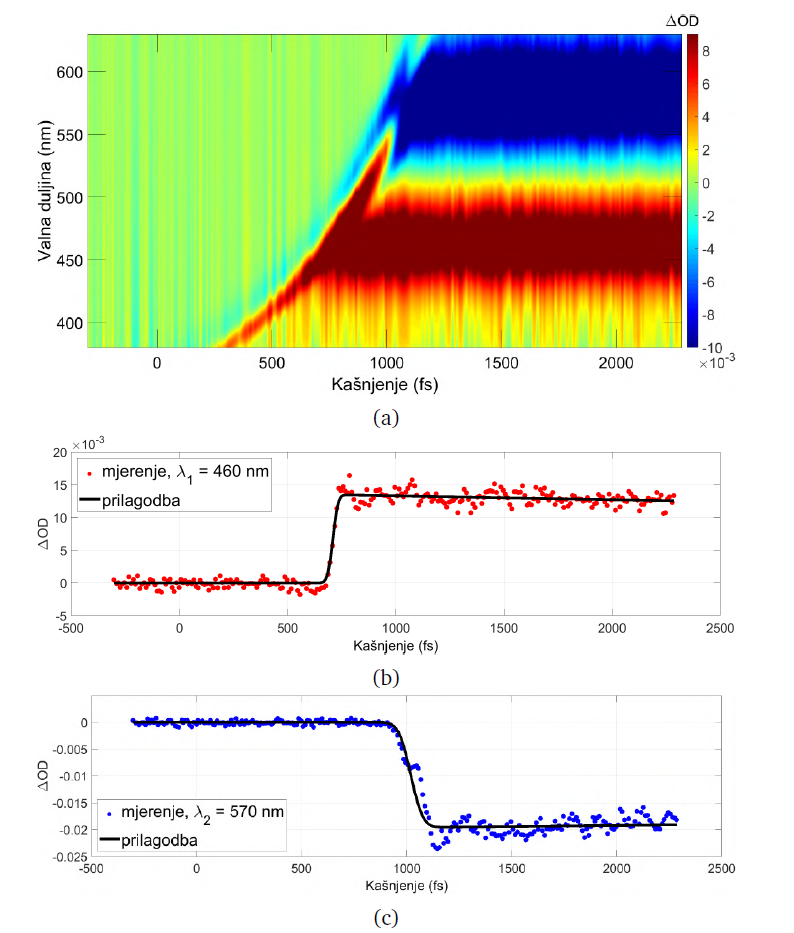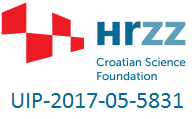V. Brusar defended his diploma thesis
28/09/2020Vedran Brusar defended his diploma thesis “Transient absorption of Rhodamine B” where he used visible NOPA pulses for excitation and resulting transients for assessment of NOPA pulse duration.
The main goal of the thesis was to optimize all experimental parameters in order to determine the maximum time resolution of the experimental setup for ultrafast transient absorption through measurements of photophysical properties of Rhodamine B organic dye molecules. The transient state was obtained by excitation of the molecules using a pump pulse with a wavelength of 550 nm, while for the probe pulse, which examines the transient state, a white light supercontinuum obtained in a calcium fluoride plate was used. From the fitting of the kinetic profiles, i.e. transients, for individual wavelengths of interest to the corresponding models, parameters were obtained that determine the time resolution of the experimental setup, which allows indirect estimation of the time duration of pulses generated in noncollinear optical parameter amplifier. From the transient absorption measurements, time resolutions were determined for different experimental setups, and the values obtained ranged from 45 fs to 212 fs. It was concluded that the determination of time resolution is influenced by coherent artifacts, primarily cross-phase modulation. These artifacts are more pronounced for measurements with shorter pump beam pulses. The duration of the pump pulse was additionally checked by measuring FROG trace of the excitation pulse.

Transient absorption of Rhodamine B. Here SF10 prisms separated by L = 15 cm were used for NOPA pulse compression. (a) Transient absorption map. Changes in optical density for (b) λ1 = 450 nm and (c) λ2 = 570 nm together with fitting of exponential decay convoluted with Gaussian accounting for IRF. Resulting temporal resolution of measurements at two wavelengths are: Δt1 = 55 fs i Δt2 = 104 fs.
 Group for Applied Ultrafast Spectroscopy
Group for Applied Ultrafast Spectroscopy